Focusrite’s Scarlett Solo Interface
Getting audio into and out of a computer can be confusing – not necessarily because of the actual process or software used, but because there are so many choices when it comes to actually picking an interface before you get started. Whether you want to up your online audio presentation quality or increase your recording capabilities, this guide will help you choose from the confusing maze of choices.
Price
To say that interfaces come in a wide range of prices is an understatement. While you can find some for as low as $25 on Amazon, the bare minimum is probably around the $65 mark with the Behringer UM2. That said, once you break the $100 mark with the Focusrite Scarlett, you’re talking about some reasonable quality. Prices can easily jump into the $5,000 range, but you’re talking a completely other level in quality and features that might be overkill for your purposes at that point.
Computer Connection
Interfaces come in any one of three flavors of computer interface formats: USB, Firewire, or Thunderbolt. USB interfaces are the cheapest, but also have the least capabilities because of the limitations of the USB format. Firewire is now an old format and not worth pursuing unless you have a computer using that port. You’ll pay more money but get a lot more capabilities (i.e. more channels), but you might have a hard time finding a new one.
Most of the latest higher-end interfaces are based on Thunderbolt, which provides the most features. If your computer has a Thunderbolt port, the next thing you need to know is whether it’s Thunderbolt 2, 3, or 4. Note that the connectors and cables are different between them so be wary of what you’re purchasing. Remember that while Thunderbolt ports are common on Macs, they’re not found as often on PCs and sometimes don’t support the Windows OS.
Number of Inputs
Most interfaces come with a minimum of 2 channels (although you will find some “solo” versions with only one). That might be plenty for your needs, but if you’re into recording a band note that USB interfaces usually top out at 8 inputs. Be sure to note what kind of inputs they’re referring to, since some are all mic inputs while others area combination of mic and line with different style connectors as well.
Capabilities
An interface has two jobs: getting audio into the computer and getting it back out again. The input side is easy since there’s usually at least a mic/line gain control, but it’s also nice to have a phase switch, 48V phantom power switch, and even an input pad to decrease loud signal levels that could overload the interface.
On the output side, we want at least the ability to control the level to our monitors (usually called a Monitor control), and a headphone output, preferably with its own level control.
While you can get either all or some combination of the above, the next thing to look for is how easy it is to operate these features. Inexpensive interfaces try to save space by placing these controls all over the box, which can make it really difficult to get to what you need once it’s wired up. Paying a bit more can get you an interface with everything on the front panel where it’s all easy to see and control.
Accompanying Software
Most interfaces come with a software app that provides additional control over the box. The problem is that you don’t get a chance to see it before you purchase the unit, so there can often be some head scratching during setup. Before you purchase a unit, it’s best to visit the manufacturers website to see if there’s a setup video and some insights of its capabilities.
Speaking of capabilities, some interface software will provide some cool audio effects as well as recording abilities while in other case you might be supplied with third party software for that.
Latency
Latency is the delay caused by the time it takes audio to pass from the input to your audio interface through the ADC (analog-to-digital converter), through your DAW, and then back out via the DAC (digital-to-analog converter). Many interfaces (usually the more expensive ones) have a low-latency mode so you can use plugins while recording and not hear a delay while monitoring.
The Bottom Line
Interfaces sound so much better than they did just a few years ago as quality components used have dropped in price. Once you get past the $100 mark it’s hard to pick a bad one in terms of sound. Everything else comes down to preference and need. One last thing – the form factor of the box is important, so be sure it fits where you’ll want to put it.








